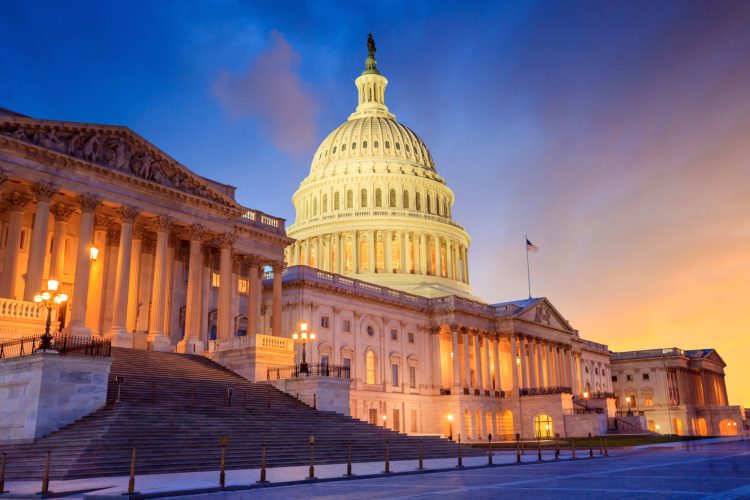This week on Facing the Future, Concord Coalition Policy Director Tori Gorman, Chief Economist Steve Robinson, and I took a look at President Biden’s newly released Fiscal Year 2023 $5.8 Trillion federal budget proposal, measuring the new spending and revenue proposals against our own budget criteria that we released last week. Later in the program, we also took a deeper dive into the question of revenue. With inflation and health care costs rising, we are going to need more of it for the long term. So how do we get more revenue, and what kind of revenue sources give us the most “bang for the buck”?
The Biden administration’s budget proposal does raise taxes by $2.5 trillion over 10 years, much of that covered by a new tax on wealth and unrealized capital gains from Americans with assets valued at over $100 million. It also increases spending by another $1.5 trillion dollars, including major increases in education, health care, defense and crime fighting. However, Gorman said the budget strikes her as more of a political document meant to give Democrats campaign talking points for the 2022 mid-term Congressional elections, rather than a serious attempt to forge a bipartisan governing compromise with Republicans or to address long term fiscal sustainability.
“There is more money for education, more money for criminal justice and policing efforts, there is a big increase in defense for fiscal year 2023, there are tax increases on the wealthy. I look at this as a budget that is built for campaigning and withstanding Republican criticism on the campaign trail,” said Gorman.
Notably the Administration’s former Build Back Better agenda is largely consigned to ‘deficit neutral budget reserve fund’ that presumably contains enough space to incorporate some elements of the administration’s domestic policy agenda, also currently under negotiation. This may contain funding for climate change initiatives, deficit reduction, and potentially opening up more offshore exploration for increases in energy production.
The overall deficit figure for Fiscal Year 2023 projected in the Biden budget proposal is $1.154 trillion, which is more or less a return to where the deficit was projected to be in that year immediately prior to the surge in emergency relief spending brought about by the COVID-19 pandemic. Measuring up against some of our own budget criteria, the Biden budget plan falls short in a number of key areas. According to Robinson, the underlying economic assumptions used to project revenue growth and the cost of debt service do not reflect current and future inflation levels and interest rates.
“There has been a huge change in both the inflation rate and in interest rates, and that is not reflected in this budget,” said Robinson. “They basically assume there will be 4-5% inflation this year, and then by next year (2023) inflation will go back down to the Fed’s target of 2-3%. The budget was based on last year’s numbers – before the war in Ukraine and before some of the other continued supply chain shocks we are seeing around the world. They vastly underestimated inflation, and also as a result they have vastly underestimated interest rates, because interest rates and inflation are ultimately tied together.”
Robinson continued, “In the long run, they are assuming real GDP growth of 2.3% which doesn’t sound extraordinarily high, but the problem is the economy has been changing over the last few decades. We’ve been seeing the population age, and a decline in immigration and productivity growth. Most economists look at the administration’s projected GDP growth as overly optimistic.”
Gorman also gives the Biden administration a failing grade in terms of its transparency, citing among other factors the still as yet to be defined ‘deficit neutral reserve fund.’
“There is a lot that can happen under the surface, when all you are stipulating is that this thing will be deficit neutral over the next 10 years,” said Gorman. “You can raise deficits enormously in years 1-9 and then rely on a ridiculous pay-for in the 10th year that – wink-wink, nudge-nudge – everybody knows that a future Congress is going to repeal. Aside from not knowing what they’re going to spend it on, we don’t know how they are going to offset those costs. Are we looking at a big giant tax increase? I think voters would want to know that. If there is going to be a big giant tax increase, who’s it going to be levied on?”
Another questionable assumption in the budget is a significant growth in revenue over the 10-year budget window due to the sunset of individual tax cuts enacted in 2017. They are scheduled to expire after 2025, the year after the next Presidential election. Gorman finds it highly unrealistic to expect any presidential candidate running in 2024 to agree to let those cuts expire and result in higher individual taxes.
On the subject of revenue, Gorman recently penned a blog post entitled “We’re gonna need a bigger boat” making the case for higher overall federal revenue to meet current and future obligations.
“It will be interesting to see what kind of tax increases aside, from closing the tax gap, lawmakers in the House and Senate are going to support,” said Gorman. “I’ll say the dirty little word that nobody’s talking about yet, and that’s probably where we’re going to go eventually, and that’s a VAT – a value added tax. We’re going to tax consumption. Honestly, I think it’s probably one of the most efficient ways to tax people because you can’t avoid it. When you’re being taxed at the point of purchase, whether it’s a luxury home, boat, or automobile, you’re paying that tax right then and there. It makes it a lot harder to hide. You can’t hide your consumption or purchases the way you can hide your income as a wealthy individual.”
Hear more on Facing the Future. I host the program each week on WKXL in Concord N.H., and it is also available via podcast. Join me and my guests as we discuss issues relating to national fiscal policy with budget experts, industry leaders, and elected officials. Past broadcasts are available here. You can subscribe to the podcast on Spotify, Pandora, iTunes, Google Podcasts, Stitcher, or with an RSS feed. Follow Facing the Future on Facebook, and watch videos from past episodes on The Concord Coalition YouTube channel.
Continue Reading










